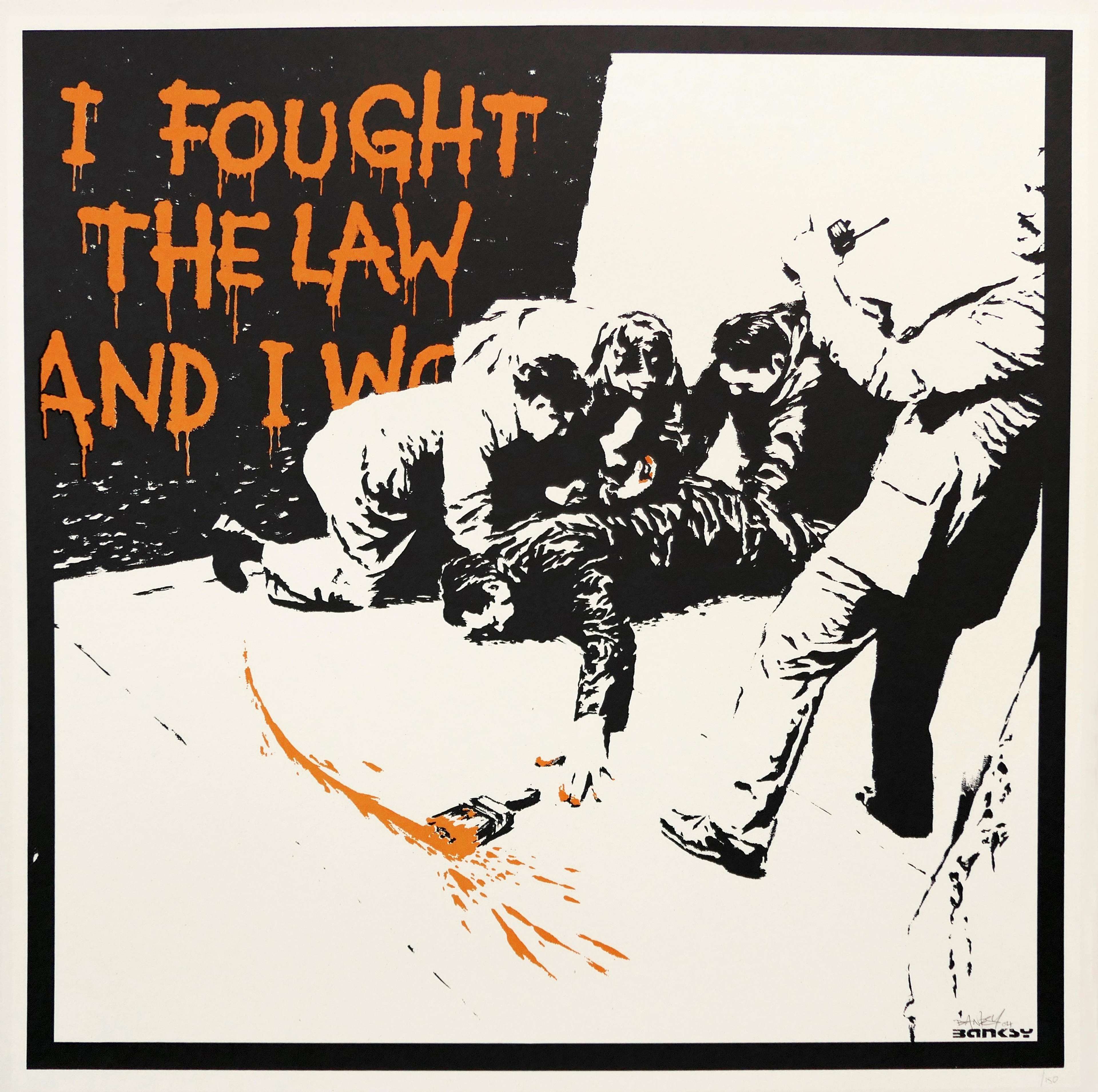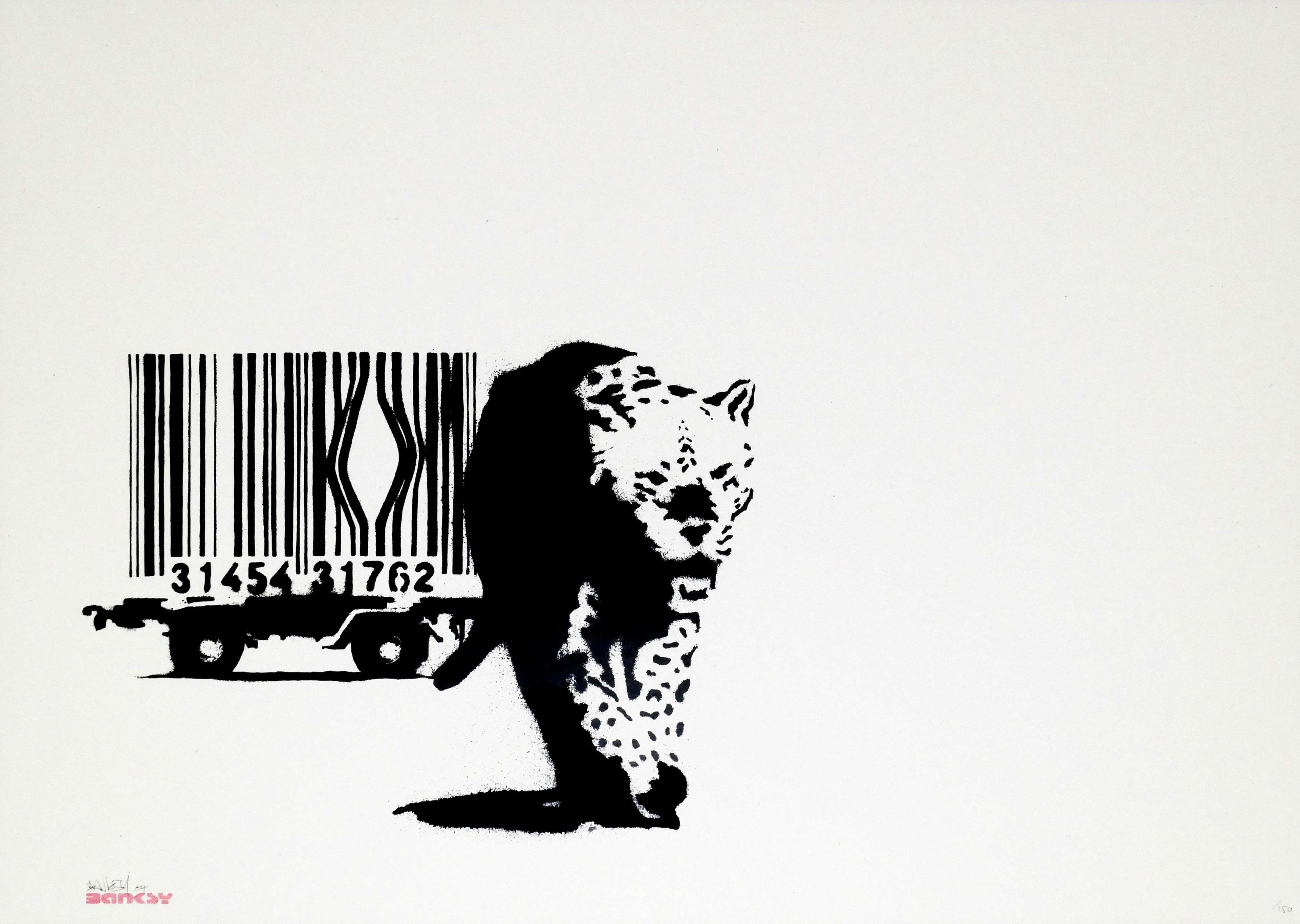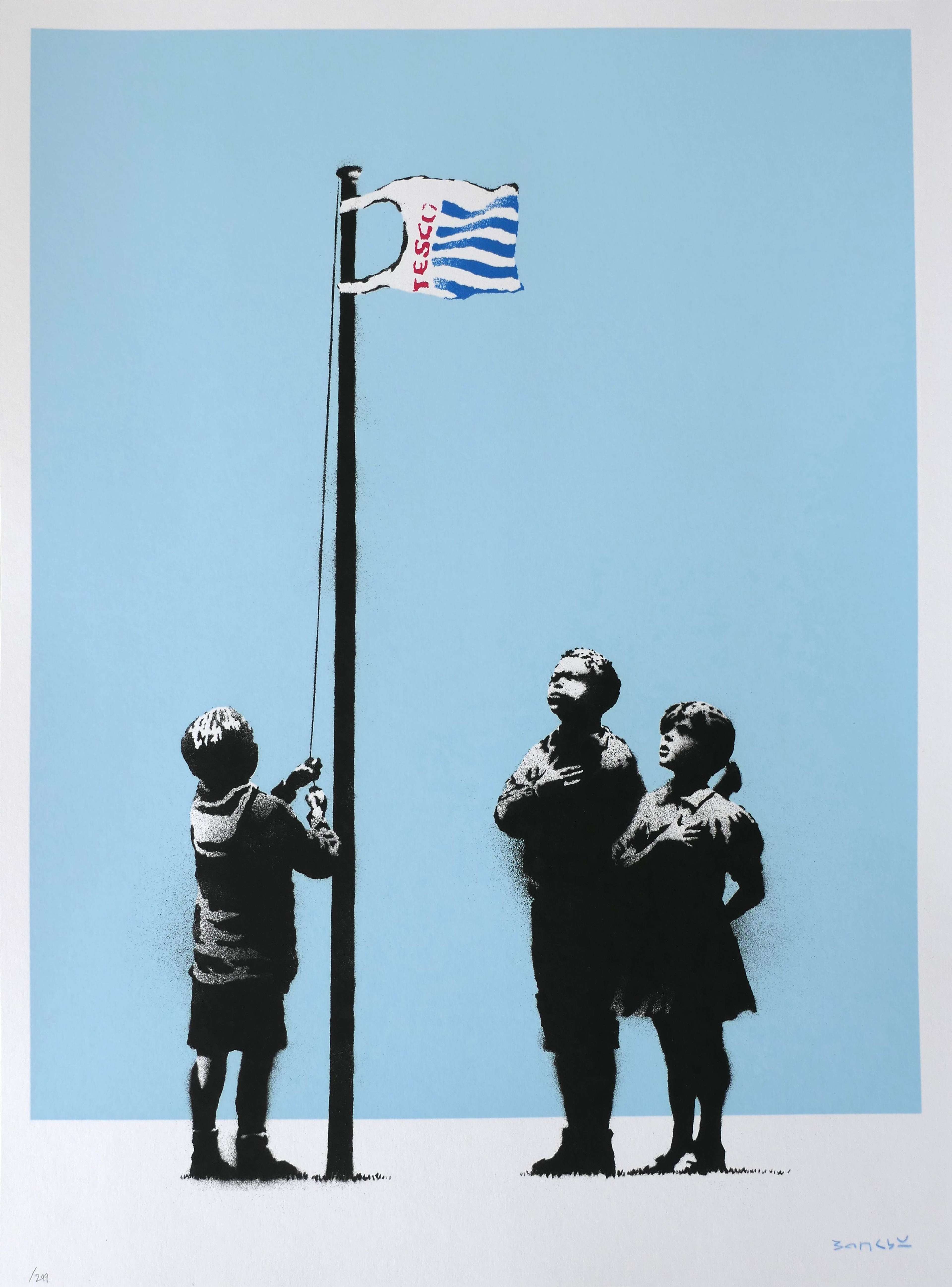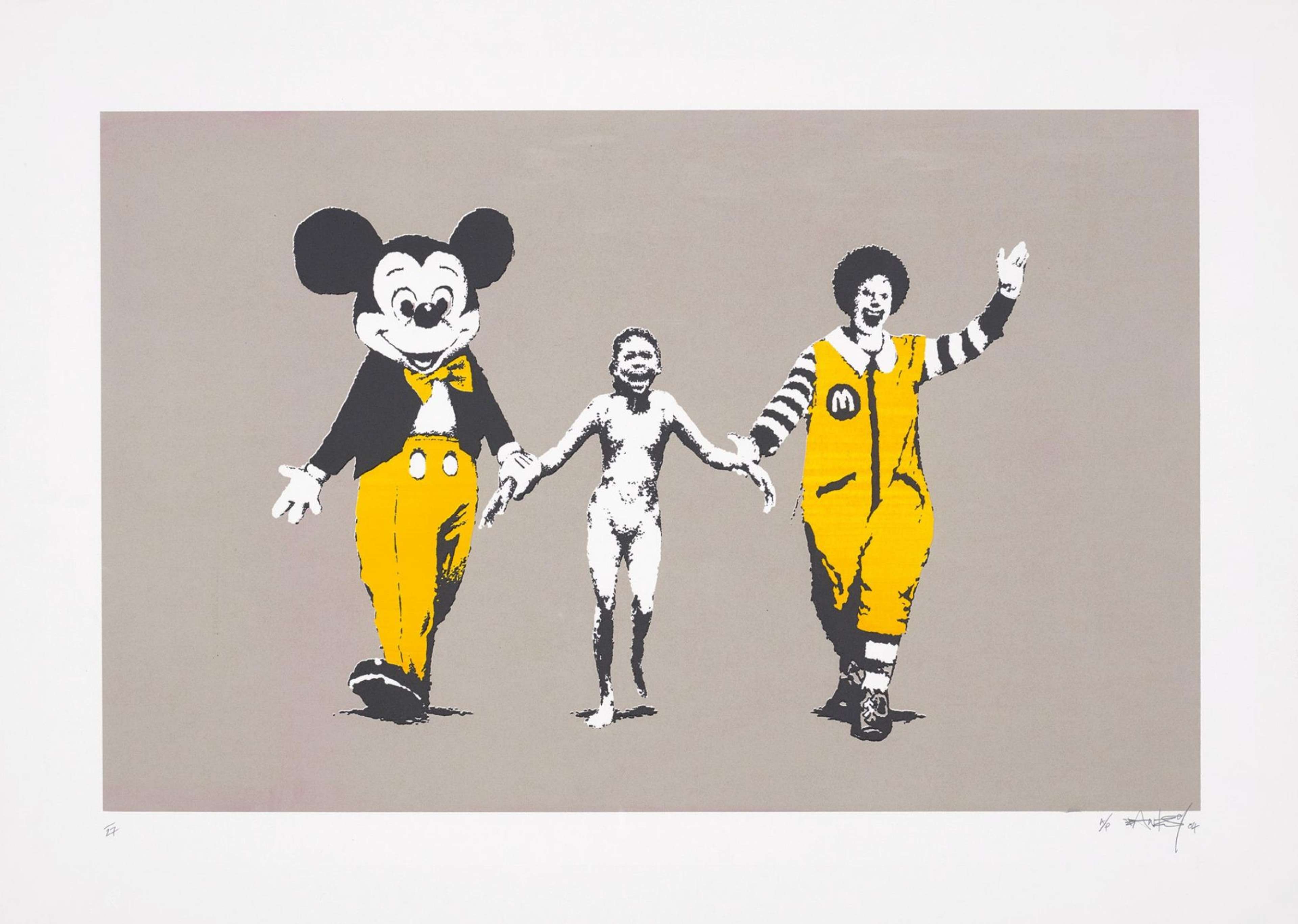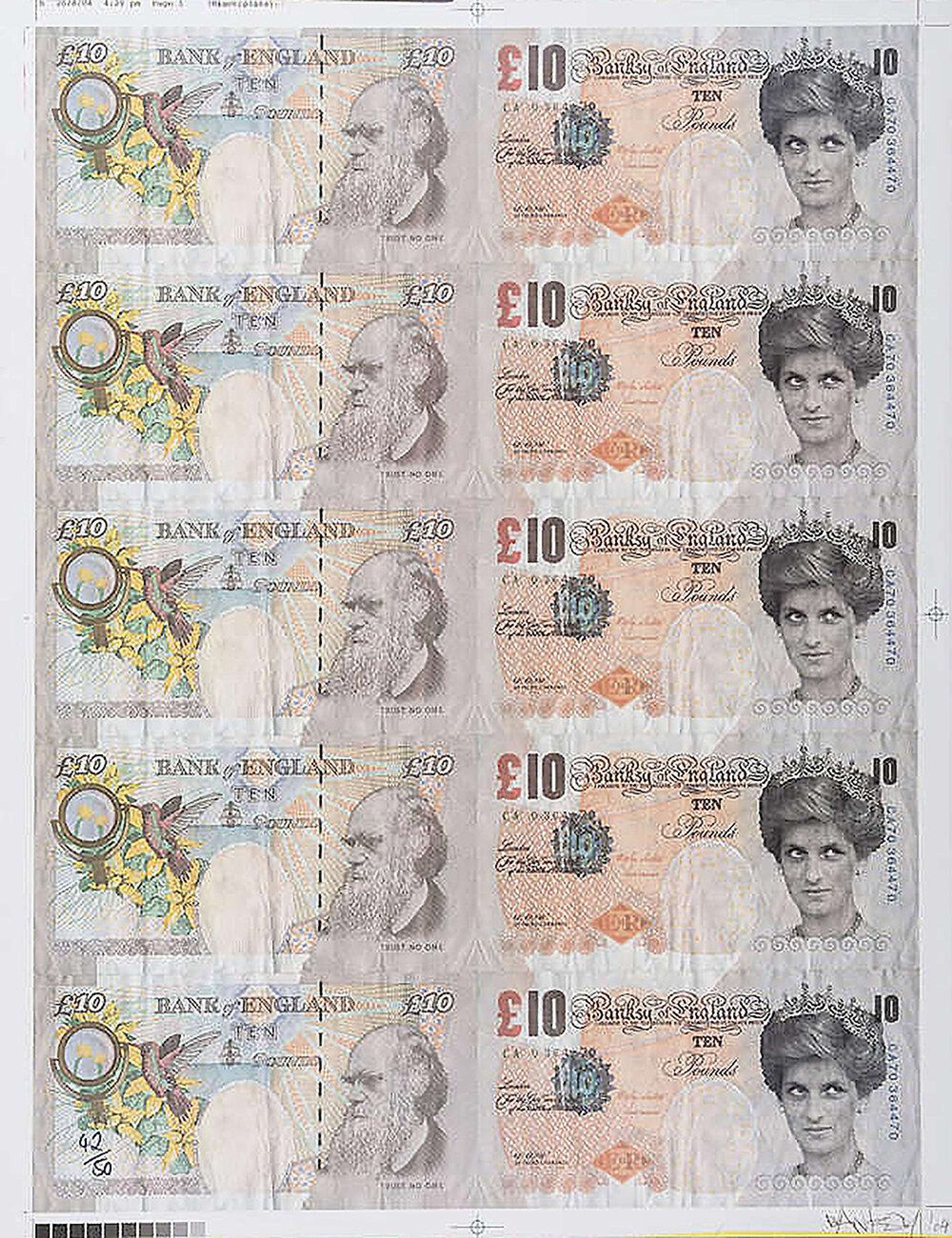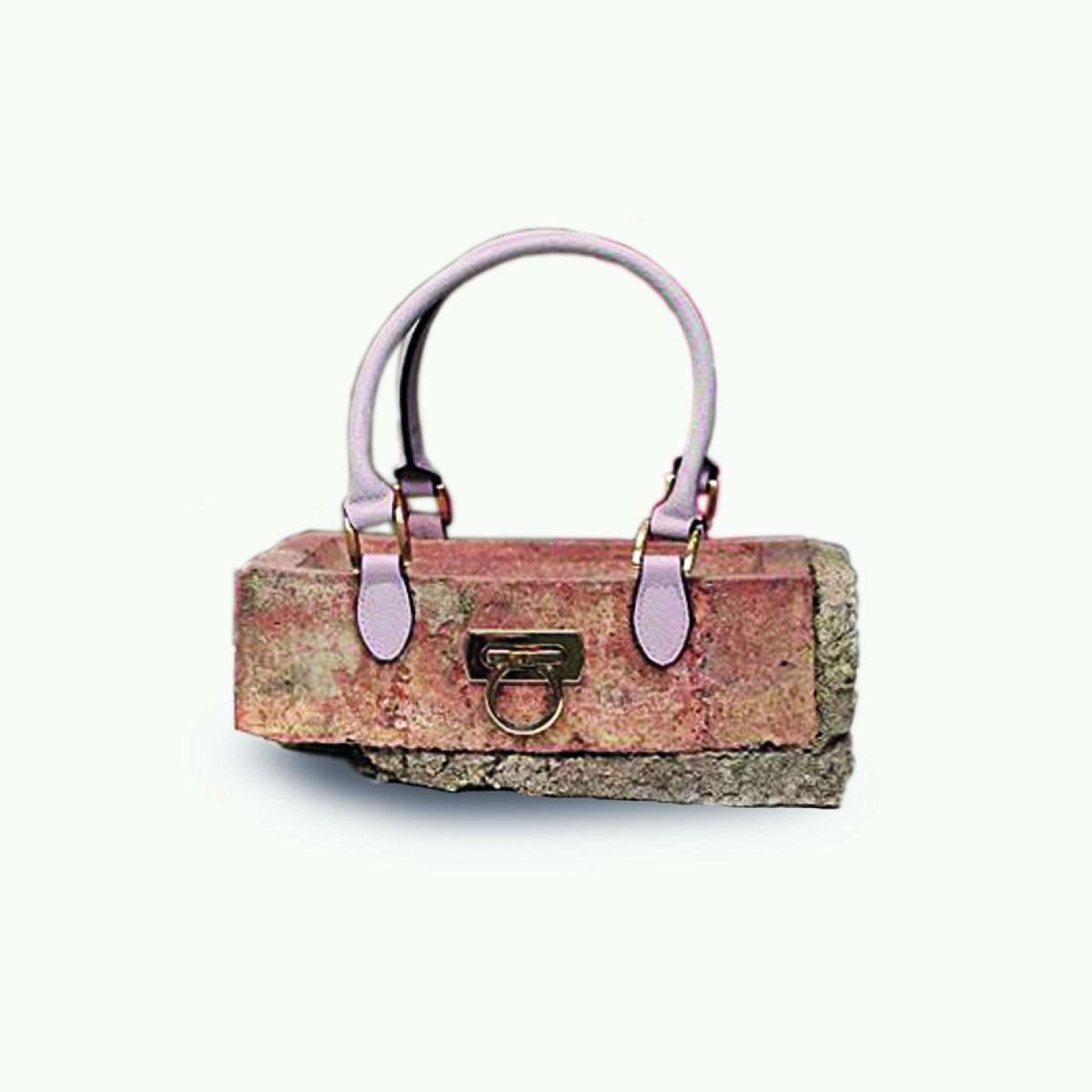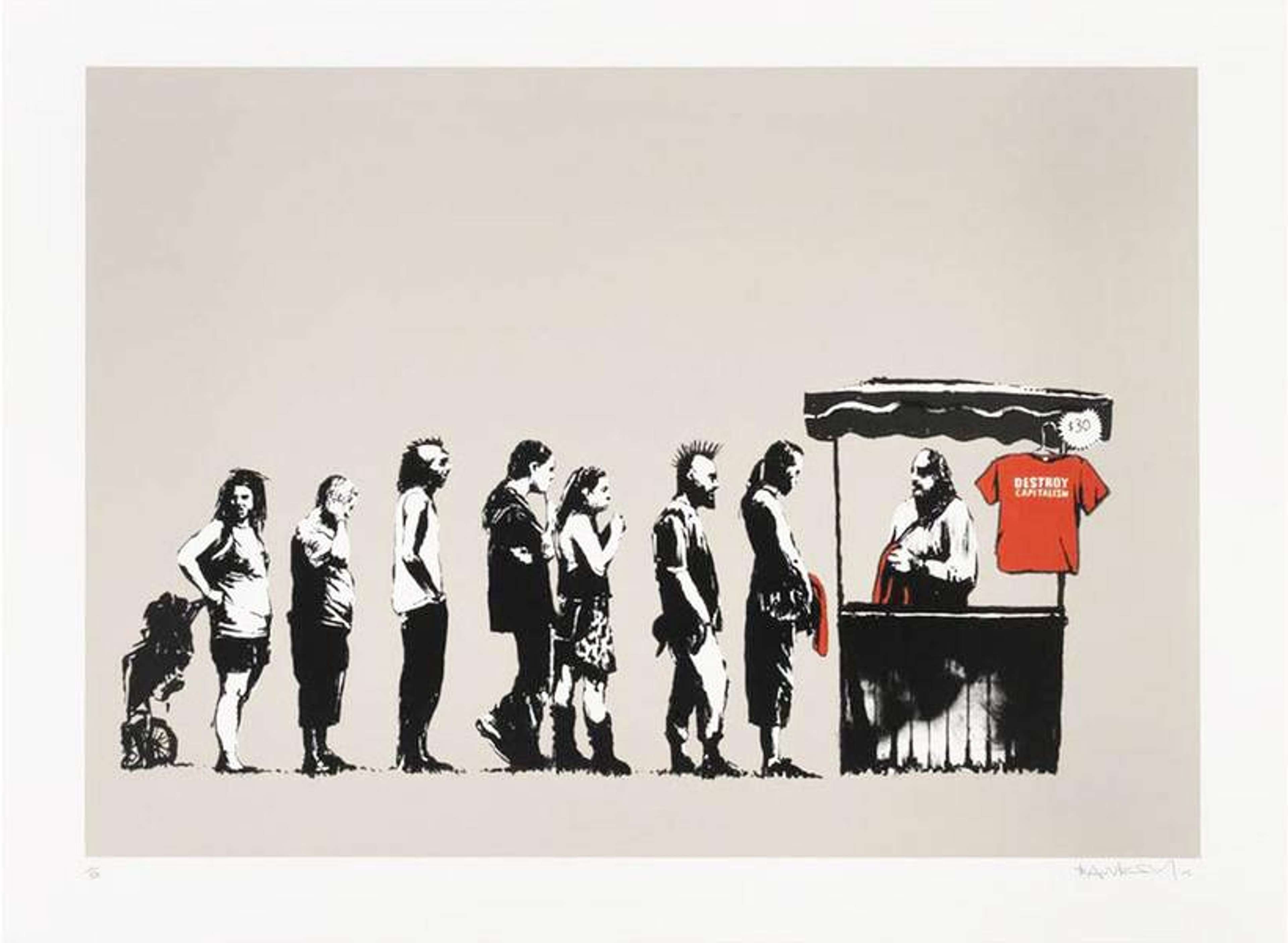 Festival (Destroy Capitalism) © Banksy 2006
Festival (Destroy Capitalism) © Banksy 2006
Banksy
269 works
Banksy prints and original works offer twisted critiques of both capitalism and anti-capitalists. Banksy’s anti-capitalist stunts and motifs leave us never sure on whether the street artist is on the side of consumerism or making a critique against it.
Going, Going, Gone...
So read the caption to this image on Banksy’s Instagram days after his Girl With Balloon painting was flogged for over £1 million at Sotheby’s and, immediately after the gavel slammed down, was shredded. Retitled Love is in the Bin after the shredding, Banksy poked fun at the buyer in his predictable seething satire. Protected by his anonymity, the back-alley graffitist has always used his art to comment on the fickle nature of consumerism. Yes, it is ironic that this multi-million earning artist uses his work to address the dangers of capitalism. But when you witness a Banksy, you are not only looking at a stencilled image, but a mirror: a mirror which attacks everything from our gluttonous shopping habits to our quasi-religious idolisation of big brands. The following motifs have become integral to Banksy’s arsenal of cynical messages for his viewers and buyers.
Festival (Destroy Capitalism)
Banksy’s Festival, also known as Destroy Capitalism, represents the artist’s true mastery of irony. The image brings a critique of capitalism onto a group of ‘misfits’ who themselves represent a subculture that society considers anti-capitalist. The figures of Banksy’s image queue at an alternative music festival to buy t-shirts for $30 a shirt. The image can be read as an ironic comment on how even capitalism’s most fervent opponents may be caught in its trap and that events like alternative music festivals have become hypocritical versions of themselves.
Trolley Hunters
Banksy’s empty shopping trolley pinpoints modern humanity’s lack of self-sufficiency and reliance on the supermarket for survival. Trolley Hunters shows not only the irony of the ‘civilised’ world’s belief that capitalism is the only way to live, but also positions the trolley as something to be hunted and destroyed. The trolley is a threat to be poached by the three hunters, but fragile enough to be caught by them in plain sight. The trolley was reiterated in Peckham Rock, which Banksy fashioned to look like a prehistoric drawing of a man pushing a shopping cart. After its illegal installation in The British Museum the rock was unnoticed for three days, showing just how ingrained the icon of the shopping trolley is in our visual language.
 Image © michaelpickard (CC) BY-NC-ND 2.0 / Peckham Rock Sculpture © Banksy
Image © michaelpickard (CC) BY-NC-ND 2.0 / Peckham Rock Sculpture © BanksyConsumerism Crucified
Subverted to criticise our elevation of consumer goods and brands to God-like status, the icon of Christ being crucified is a recurring theme for Banksy. Christ With Shopping Bags superimposes the evocative image with shopping bags containing candy canes, champagne bottles, and a little Mickey Mouse toy. The present-loaded bags show how the celebration of Christmas is one of extravagant gift-giving that big brands capitalise on every December, rather than the birth of Christ.
In Sale Ends, Banksy removes the central image of the crucified Christ completely. Instead, Christ is replaced with a sign reading ‘Sale Ends Today’ in eye-catching, bloody red. Banksy’s Magdalene, Mary and the Apostles are mourning not for the death of Christ, but the end of a shop’s sale period. Banksy shrewdly toys with the idea that Christ died for the sins of the people. Today, the biggest of those sins is gluttony.
Barcodes
Breaking through the barrier of consumer conformity, Barcode shows a great leopard prowling towards the viewer. It would seem that Banksy is critiquing the captivity of wild animals in zoos for their economic gain. However, this is the artist who spray-painted a live elephant for his show Barely Legal in 2006. His merging of the barcode, another instantly recognisable icon of capitalist society, with the striking animal proves that consumerism is always the elephant in the room when it comes to Banksy’s work.
Morons
Always one to ironically mock the art market that funds his practice, Banksy is unafraid to attack the wealthy art-buyer in his Morons series. The print interprets a photograph of the moment when Van Gogh’s Sunflowers broke the record for the highest art sale at auction in 1987, reaching an outrageous £22.5 million. Instead of Gogh’s ‘masterpiece’, the gold-gilt frame encases a text panel reading: ‘I can’t believe you morons actually buy this shit’. The auction house is the same setting that Banksy’s own work has fetched millions, making the sneering text even more contradictory. What Banksy proves however is that the excessive consumer habits of the art buyer will continue to feed the issue of exclusiveness in the art world.
Tesco
Very Little Helps is the witty and hard-hitting title of this screenprint of children raising a Tesco shopping bag as a flag. Created amidst the UK’s financial crisis of 2007-08, Banksy turns the plastic supermarket bag into an ironic beacon of hope for these three youths who press their hands to their heart and gaze at it adoringly. By undermining Tesco’s slogan ‘Every Little Helps’ with this dry reworking, Banksy emphasises how these huge multinational corporations have killed off small businesses, leaving the working class with an option that isn’t always as durable as it may seem.
Lifestyle
Sorry The Lifestyle You Ordered it Currently Out of Stock is what happened when Banksy collaborated with Damien Hirst: the art-cum-business mogul who rarely puts brush to canvas himself. Like a wall of graffiti that is constantly being scrubbed out and painted over, Banksy has scrawled a muddy-brown paint over one of Hirst’s Spot paintings. This is not only a play with Hirst’s studio model, whose output is created almost entirely by his ‘assistants’, but purveys the unattainable lifestyle one has to lead to be worthy of purchasing a Hirst.
 Image © Sotheby's / (Defaced Hirst) Sorry The Lifestyle You Ordered Is Currently Out Of Stock © Banksy 2013
Image © Sotheby's / (Defaced Hirst) Sorry The Lifestyle You Ordered Is Currently Out Of Stock © Banksy 2013Napalm
One of Banksy’s most poignant works brings together Nick Ut’s photograph of nine-year-old Kim Phuc, a victim of the Napalm bombing during the Vietnam War, flanked by America’s consumer deities Mickey Mouse and Ronald Macdonald. This intensely political piece makes clear the indelible ties between war and capitalism. As Banksy has observed, money and power are the prerogatives of capitalist superpowers, and their seemingly innocent mascots are the instigators of turmoil in this particular series.
Shop Until You Drop
Banksy’s Shop Until You Drop, also known as Falling Shopper, is a striking mural created in 2011 on the side of an office building in London’s Mayfair district. This artwork, located high above Bruton Lane, depicts a woman tumbling through the air as she desperately grasps a shopping cart that is plummeting beside her. The piece critiques consumerism by showing the literal and figurative 'fall' that comes with blind devotion to materialism, a theme Banksy revisits in multiple works. Positioned high enough to create an illusion of actual descent, the mural symbolises the 'weight' of relentless consumer culture.
Painted in broad daylight, Banksy utilised scaffolding and a tarpaulin to avoid detection, giving the appearance of regular construction work. This technique aligns with his “Brandalism” approach, where he repurposes advertising spaces to mock consumerist messages. Shop Until You Drop is a potent visual reminder of capitalism’s control, capturing the essence of Banksy’s critique of blind consumer pursuit.
 Image © Wikimedia Commons / Shop Until You Drop © Banksy 2005
Image © Wikimedia Commons / Shop Until You Drop © Banksy 2005Cash
Almost identical to the paper money we used to handle every day, Banksy’s Di-Faced Tenners are both art and an instance of fraud worthy of criminal charges. As he explains in the 2010 spoof documentary Exit Through the Gift Shop, Banksy printed these £10 notes and handed some of them out at Reading Festival. So convincing were the banknotes that people began using them to buy their drinks at the music festival. Banksy made £1 million worth of this ‘Banksy of England’ currency, and has had to keep them boxed up in his studio for fear of arrest. What he proved however is that we rarely take the time to really look at our cash. Too eager to get whatever product we desire, we mindlessly exchange cash for the consumer goods we value above all else.
Back in 2019, Banksy announced on his Instagram that he was opening a shop. True to facetious form, this ‘shop’ was named Gross Domestic Product: satirising the term used to measure a nation’s economy. The website homepage features a ‘Massive Disclaimer’ stating: ‘You are advised that GDP may prove to be a disappointing retail experience – especially if you’re successful in making a purchase’. His Banksy Clutch Bag is accompanied by a tongue-in-cheek product description: ‘Probably no less practical than the output of most haute couture fashion houses’. A very Dada-inspired project, GDP mockingly brought together found objects and dramatically increased their value with the addition of Banksy’s mark of authenticity: a true stab to the heart of consumerism.



